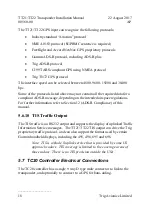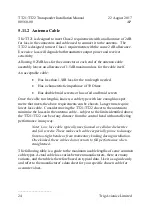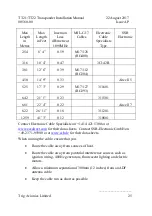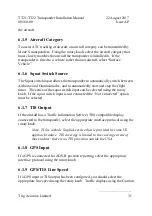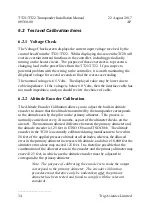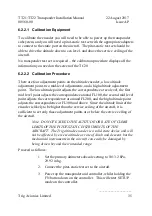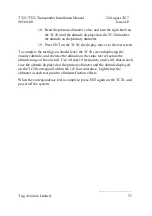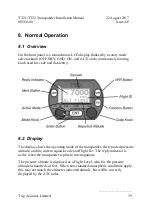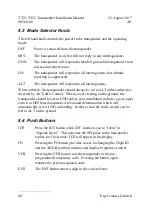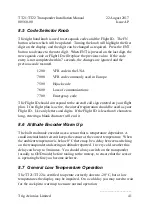
TT21/TT22 Transponder Installation Manual
22 August 2017
00560-00
AP
______________________
32
Trig Avionics Limited
protocol run at 9600 bps. Panel mount GPS units with Aviation format outputs
generally also run at 9600 bps. NMEA GPS units generally run at 4800 bps.
Trig TN70, Freeflight 1201 and NexNav 3101 GPS receivers run at 19200 bps.
The Trig TN72 runs at 9600 bps.
Note: The TIS output and GPS input speeds are not separately
controlled on the TT21/TT22. Not all combinations of GPS input and
TIS output will be usable if the external devices operate on fixed bit
rates and are different to each other.
6.1.10
GPS Certification Level
An important metric for ADS-B ground system behaviour is the SDA or
System Design Assurance level. It is intended to reflect the probability that the
GPS position source is providing erroneous information, and is based on the
certification standard that was used by the GPS vendor. This will be indicated
in the form of a letter code (A to D) on the data plate or installation
documentation for the GPS in accordance with the standards DO-178B and
DO-254, for example “DO-178B level C”. If both standards are reported but
at different levels, use the lower standard (higher letter).
This configuration item is not required if the C199 TABS GPS source is
selected.
6.1.11
GPS NAC velocity
Another metric that the ADS-B ground system uses to help it track the aircraft
is NACv. NACv is the Navigational Accuracy Category for velocity, and is a
design feature of the GPS receiver. It represents the error bound for velocity
that the GPS may report in acceleration/deceleration or turning manoeuvres.
You can find this information from your GPS installation manual.
This configuration item is not required if the C199 TABS GPS source is
selected.
6.1.12
Aircraft Length and Width
On the ground, ADS-B transmits encoded aircraft size information which is

